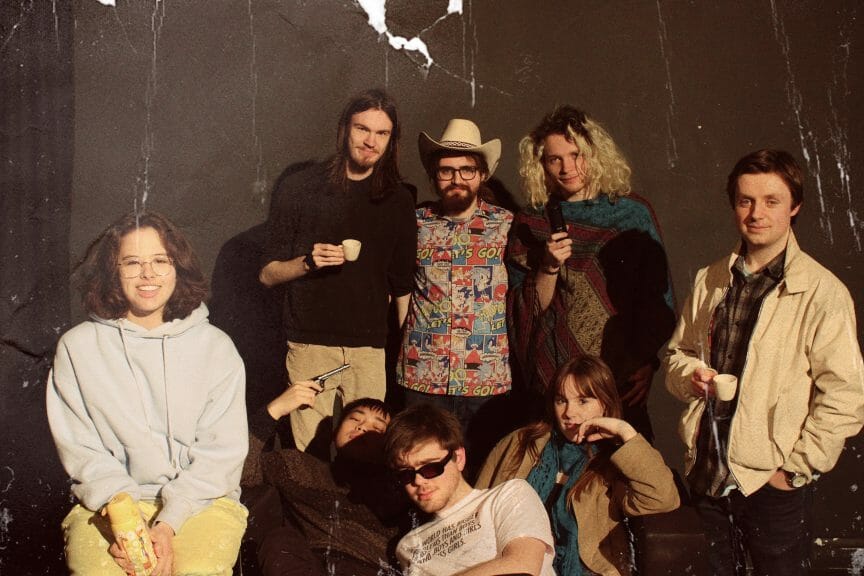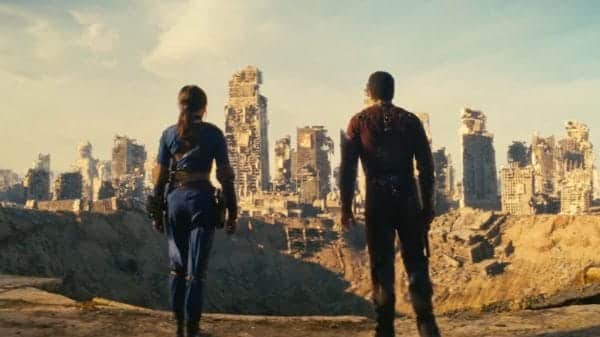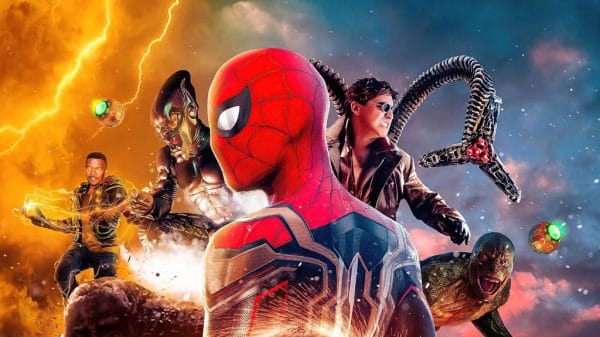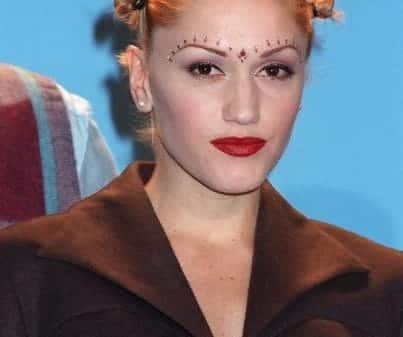Join me as I interview the students behind the new queer cowboy movie Captain Moonlite, and delve into the post-western renaissance, creative budgeting, and the idea of ‘the last great western’…
Ramblings Of The Past
My young filmmaker friend Cai Barnard-Dadds and I have been dancing around the idea of doing another interview since our last one-way back in December of 2022 (which wasn’t that long ago, but let me feel nostalgic, okay?). Back then he had spoken to me of future projects, ideas floating swiftly ahead in the near future… and that future is now.
So, on the day of love itself, Valentine’s day, I sat down with Cai and his “ragtag” crew to speak to them about their latest cinematic venture: the real-life story of the queer Australian cowboy, Captain Moonlite, and how exactly they were going to create an authentic Western experience, gunfights and all, on the budget of a student film…
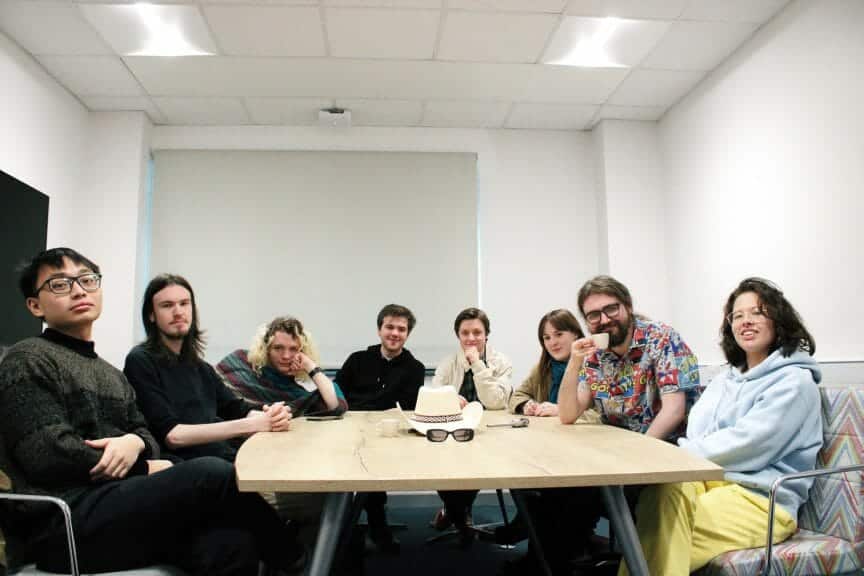
The Ragtag Crew
Ready to ride? Then I think it’s time you met the crew. So from left to right we have:
Melvin Liew – Cinematographer: “I come from Malaysia”
James Matthews – Producer: “I like statistics, but I’m not a mathematician.”
Luke Heptinstall – Sound: “I once came second in a lettuce-eating competition.”
Cai Barnard-Dadds – Self-Proclaimed Swiss Army Knife/ Director: “This is my first time drinking Sake” [He was in fact not drinking Sake]
Liam Clements Pope – Writer: “I once dressed up as Harry Hill for… a school play.”
McKenzie Curtlin-Ross – Set Designer: Upon being asked for a fun fact about herself, McKenzie simply declared “None of us are that fun…”
Osian Harvey – Editor: “I’ve seen Avatar 2 three times… tomorrow [shall be] the fourth.” [I am unaware whether Osian actually saw the film for a fourth time]
Phoebe Parker – Set Designer: Phoebe does not get a fun fact because she arrived an hour late (although if you would like to know some more about her, just click here!)
(Unpictured) Molly Jeffery – Set Designer: “My pony only has one eye”.
Now that you know who we’re heading on our western journey with, let’s take off! Sat around a meeting table with an alcoholic drink Cai believed to be Sake (it was not, and was instead something Liam described as “fruity chloroform”), the crew began by telling me how they all ended up making a movie together, with Cai stating “It’s like a weird Frankenstein’s monster of a crew… a crossover!”, as it is filled with both old friends on their “journey’s end”, as Luke puts it, and fresh faces too.
“I think we’re all here… because we wanna make a cowboy film!”, a statement Osian makes that is met with almost universal agreement, especially from James, who adds “That makes it automatically cooler than anything else.” Melvin also chimed in with agreement, relaying that “He [Cai] says ‘I wanna do a Western film’ and I’m like ‘stop right there!’”, for that was all it took for Melvin to be in.
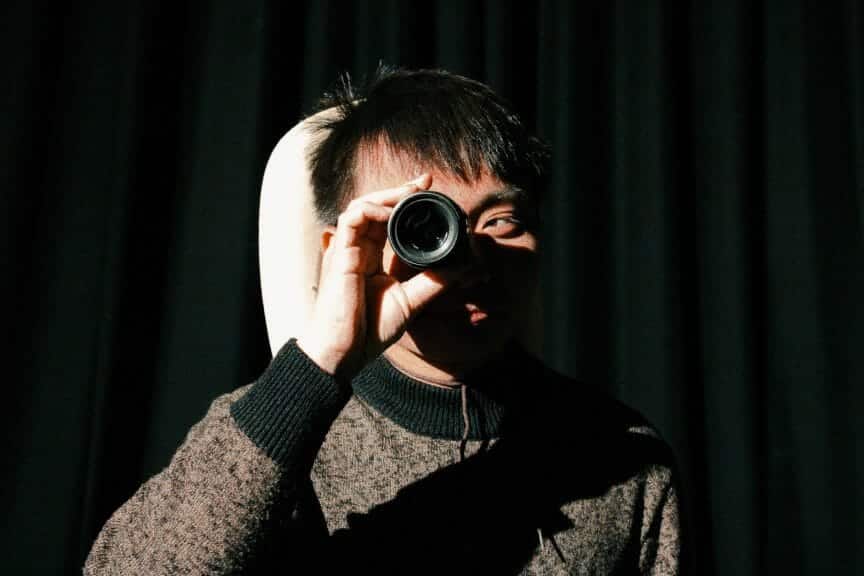
Finding Someone To Push The Buttons
Of course, putting together this ragtag crew isn’t something that happens overnight. Liam said that to get him on board, Cai “sent me a 1-page bible that turned out to be about 3 pages”, which certainly sounds like Cai to me. Osian was quick to add “I’m on this film coz Tom Watkins [a fellow editor] was busy!”, although, from the chemistry in the room, it is clear that Osian means a lot more to his crew than being a simple replacement.
The set design crew, on the other hand, was assembled by McKenzie: “Kenzie’s a very inspirational figure to follow, I guess”, Cai narrated, and added that once they had a solid set design crew together, “That’s when people knew it [the film] wasn’t gonna be bad.”
However, the most entertaining recruitment story I heard had to be that of Melvin. “I saw the coloring for Thank You [Melvin’s last film] and I asked… ‘Who shot this?!’”, Cai informed me. Then, apparently, “He just sort of showed up!” according to Osian. As we’ve already seen, however, Melvin did not take much convincing, with Cai adding “Melvin was like ‘I’ll be whoever pushes buttons’”.
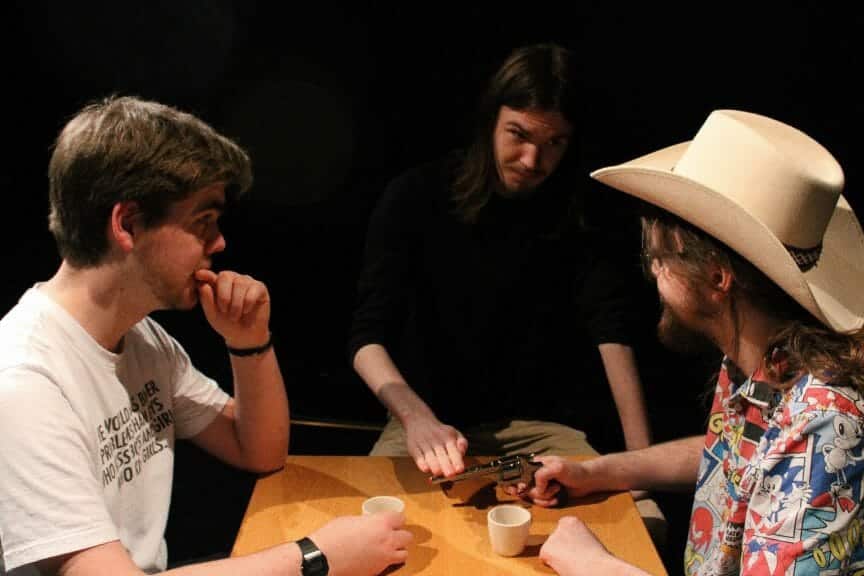
The Curse Of Captain Moonlite
When you have such a lively cast of characters behind the camera, how do you make sure you are getting the work done for the characters in front of it? Cai answers “Me and James are like the two captains of this ship… everyone’s got their own little job and it’s our job to make sure it’s going in the right direction… the ship can’t be sailed without everyone else here.”
Of course, it isn’t always smooth sailing, with Osian adding in “I suppose my job is sort of to just yell at Cai…That’s what the editing process is: yelling at a director and saying ‘just because that’s how it works in your head, doesn’t mean that’s how it practically works… It’s like building Lego, putting things in the right place.” To put it more profoundly, Osian said “It’s like you [Cai] and me going on a little journey, trying to find the emotional truth.” Cai was deeply humored by this and chimed in “With me and Osian, one of us is right, one of us is wrong. It’s about working out who’s wrong.”
Although compared to prior attempts at Captain Moonlite movies, Osian tells me things have been far smoother sailing: “I think there’s a curse with adapting Moonlite… There was an early 1900s Captain Moonlite film entirely lost to history… the final shot… allegedly… is Captain Moonlite’s wife looking at his gravestone and weeping, which is just not how it was [a classic example of queer erasure in cinema]… This 2010 one, they just sort of stopped filming it, all hush-hush”. Well, hopefully, this crew does not meet the curse of Captain Moonlite!
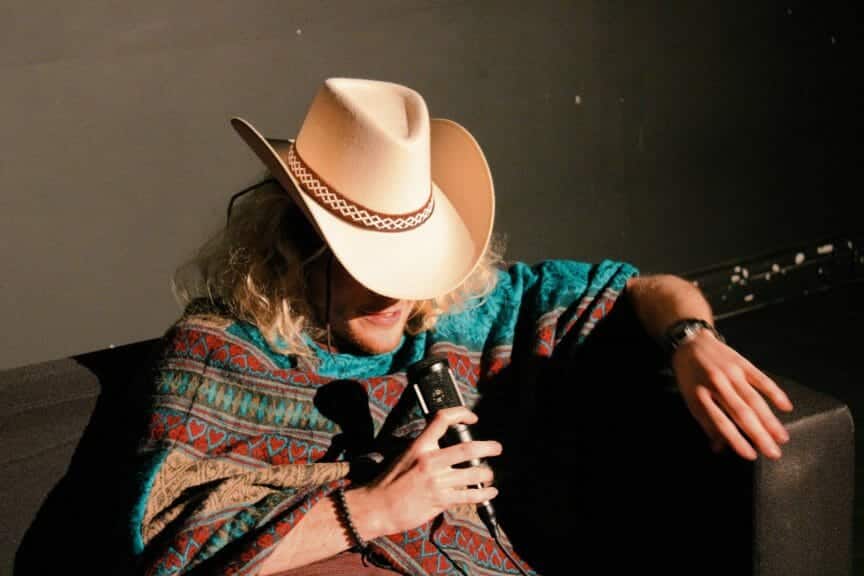
Feasibility Versus Cynicality
Of course, another problem manifests itself in trying to balance ambition with the reality of a student film, a difficult task no matter how talented the crew may be. It’s as Cai puts it, “It’s very hard… we had to condense twenty/forty years of someone’s life into fifteen minutes”, joking that due to its runtime, “its no [Baz Luhrman’s] Elvis”. James adds: “You have to come at it like ‘Great, fantastic idea, how the hell are we going to do this?’… You can afford to be ambitious when there’s someone to reel you back!”
Melvin, on the other hand, never had any worries: “– I wasn’t skeptical… it’s achievable, we just need to be smart about it… If we can pull this off, it’s quite amazing for students to do something like this.”, with Cai also noting that James’ support as the producer is a key ingredient to this: “With James, it’s not ‘let’s not do this idea’, it’s ‘how can we do this idea?’”
Luke in particular had a lot to say on this topic: “It’s a real balance between feasibility versus cynicality… There’s a tendency on student films to shoot things without really thinking about them.” Luke is eager to note that they are avoiding this pitfall, however: “we make up for things we’re missing through sound… adding the sound of gunshots, the sound of horses: implying things being there…The challenge of telling the story through sound drew me to it immediately.”
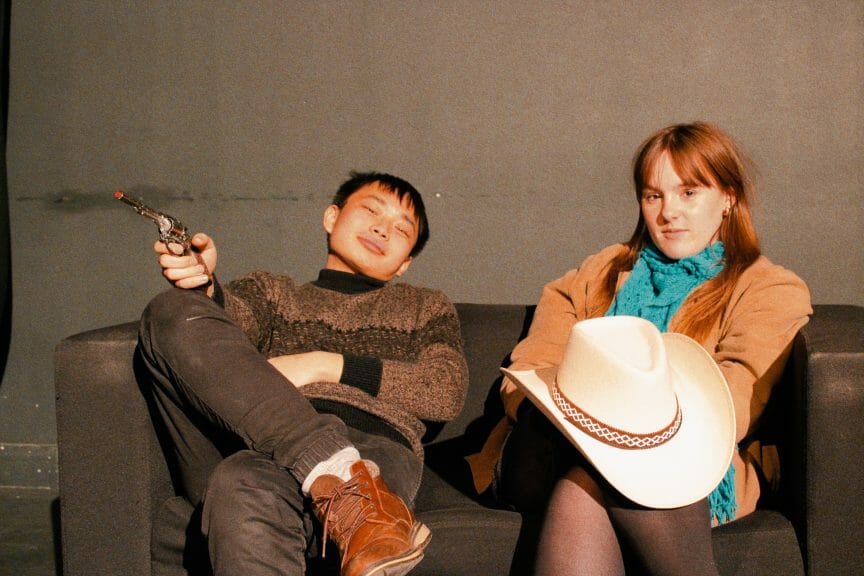
Finding “The Queer Bonnie And Clyde”
The crew did plenty of research into the Western genre, watching a variety of cowboy movies for inspiration, although Luke notes “We looked more at the post-western renaissance films… films dealing with the fallout of it.”, with Osian adding “We’ve not watched any classic John Ford… Everything we’ve watched… has been a deliberate response to 50s Hollywood Westerns.”
Clint Eastwood’s Unforgiven is where Luke’s mind went for one of their stronger, saying “It’s a film about legends and the whole western genre… you go into the real history of it all, it’s disgusting…We’re dealing with the topic of the legend versus the man.” Osian also wanted to make it clear they didn’t avoid the classics entirely, revealing that they did watch Fistful Of Dollars as it was also “a Western done on a budget”.
“The main one that stands out”, Luke told me, “is ‘The True History Of The Kelly Gang’ … it is a good reference for that period; him and Captain Moonlite were around at the same time.” Liam mused on this, adding “Moonlite was almost written out of Australian history for a long time, given the fact that he was a gay man in that time.” Cai agreed, stating “There’s a weird standard on Australian history… Ned Kelly can run around wearing a dress, but as soon as you kiss another man, you’re out of the history books… This story has sort of been erased.” So how, then, did Cai find out about Moonlite: “There was this podcast on bushrangers, and they talk about his final stand. I was like ‘this is so dramatic and beautiful… this is the queer Bonnie and Clyde.”
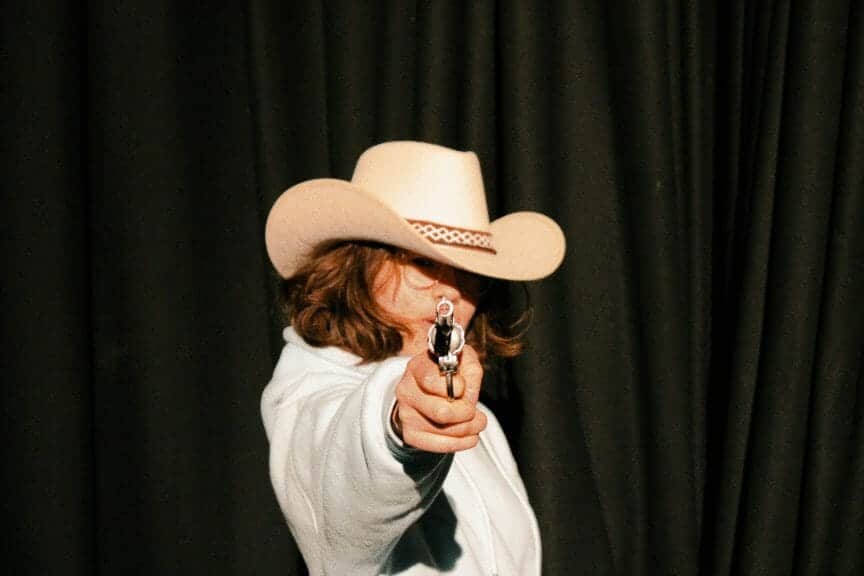
Building “The Last Great Western”
When it comes to working with a lower budget, the crew was very open about the effects (both positive and negative), especially the set design crew: “If you have too much money… it can make you kind of lazy.”, McKenzie said, with Molly adding “If we had a bigger budget, there are places we’d be able to go where we wouldn’t have to build anything [set] at all.”
“You learn more… you have to thoroughly research everything.”, Kenzie continues, “There’s a lot of close-up shots… initially you think that means less set, but really it means everything will be really detailed”. “You sit in bed googling ‘What did an Australian door look like?’”, Molly shares in good spirits. “Parts of it are gonna be in black and white, so you have to try and use colors differently to how you normally would… that’s an aspect I haven’t done before”, Phoebe added later in the discussion.
In fact, Phoebe (who, as I mentioned earlier, showed up an hour late due to coursework) had quite a bold statement to make when she arrived: “I don’t think there will be a Western in the future… the last western.” Of course, what she meant is that this could be the last Western this crew ever works on, but everyone quite liked the tagline “the last Western”, which Cai swiftly coined as “The Last Great Western”, much to the humor and delight of everyone in the room. “I’m glad that if this is our last Uni film, it’s this one”, he added; “… it’s gotta be banging”.
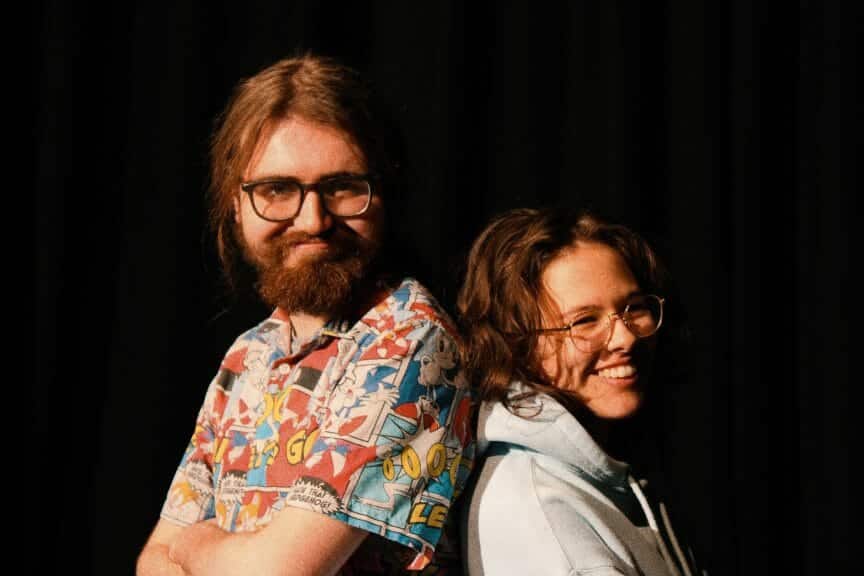
This Ain’t No Brokeback Mountain
The entire crew is aware of the sensitivity that queer storytelling must be approached with: “Only one of our writers is queer… so there’s a sensitivity we come towards it with, because we’re not an entirely queer crew.”, Luke told me, adding: “A lot of this film is a response to the way we’ve written gay romance in the past.”
However, they also wanted to stress that this wasn’t to be your usual queer story, with Cai explaining: “A lot of the queer love stories… being queer is at the forefront… this is just a cowboy story that happens to be queer.” They are also weary of the easy tropes to fall into when telling a queer story, with Osian explaining: “If you make a film that’s overwhelming sad, it is inauthentic, as there were joys there…We properly delve into the queer aspects, and give it the respect it deserves.” Cai agreed, adding “There’s joy in the love, and there’s sadness in the love… it could be queer or not queer, it is still the same story.”
Ultimately, Cai wants to tell a true, authentically queer cowboy story: “Its very important for queer people of every identity to have their own… myths and legends.”, which builds back into his idea of turning the tale of Captain Moonlite into what is “Hopefully…the queer Bonnie and Clyde.”
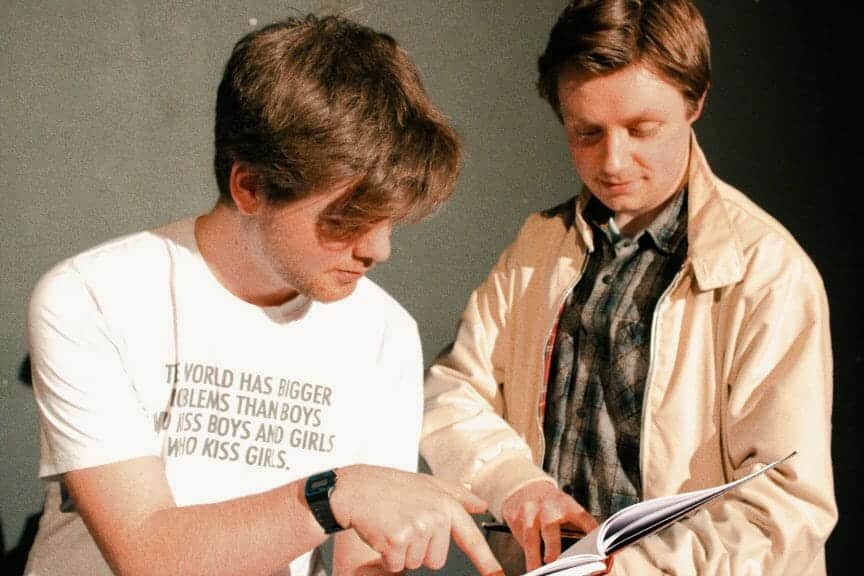
The Importance Of Telling A Human Story
As the day drew to an end, and the crew said their goodbyes, I went aside for a more intimate talk with Cai and Liam, who had a bit more to say about the film: “It’s been a very collaborative process”, Liam told me. “, we’ve all had a lot of input in the story. It’s a story you can’t really change too much because it’s a historical setting. It’s a good stabilizing point because you can’t deviate too much.” Cai laughed at this, adding “Any time someone says something Liam doesn’t like, he goes ‘didn’t happen’!”. On a more serious note, Cai mentions that “If you’re going to die, everything is laid bare… he’s got to go to the grave with more regrets. Is he [Captain Moonlie] going to be able to say all that he wants to say?”
Of course, despite the shared joke about this, Liam recognizes the strength of humility as a writer: “There are some projects where the writer … can become quite precious of their project, and become unwilling to concede ideas for the benefit of the film… You’re writing something, and then you’re giving it to other people to make your vision, but only you can really make your vision.”
Liam also started a very intriguing discussion on the budget’s positive impact on the story: “I think at the start we had ideas of grandeur… but the fact that it’s been condensed brings us down to a more human level… it is about this man, and what essentially are the last few days of his life…The fact that this story is so human… it could be put in any genre really, or any historical setting. That’s the real beauty of any human story… It’s like in titanic, you know the titanic is going to go down, but what’s going to happen to Rose and Jack? There’s that looming consequence of death, but the human story is the true potential.” Cai agrees, adding that “That [romance] is what we remember more about Titanic than the spectacle of the film… what resonates more is the characters and what they’re going through.”
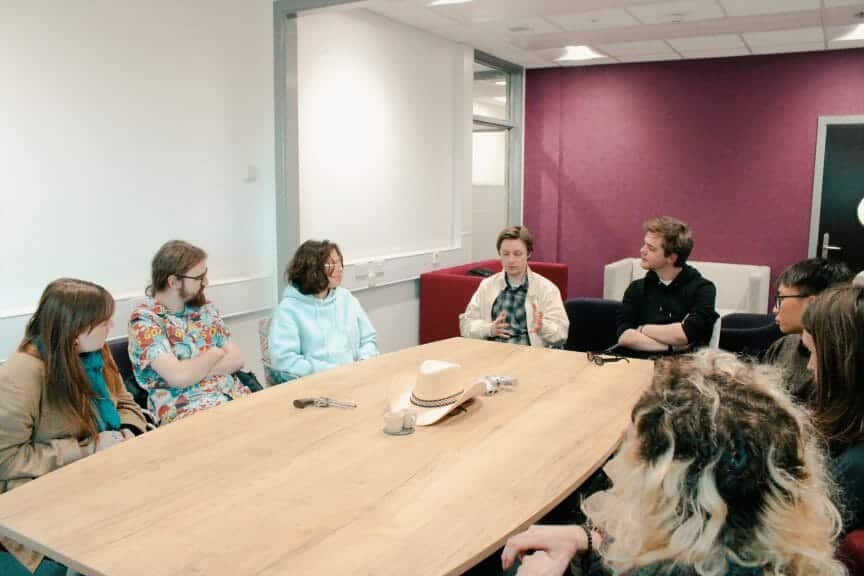
Closing Remarks
And so we reach the end of the article, with what is hopefully a fresh perspective on what is achievable with even a small budget in the world of moviemaking. I will hand the reigns over to Liam and Cai for this final segment, as I believe their words add a better finishing touch than I ever could:
Liam: “Our lecturer, he went to film school… so we’re not only learning from our own mistakes from the past three years, we’re learning from his mistakes… the experiences he had. He told me, there are four versions of a film: the one you write, the one you shoot, the one you come to the first edit with, and the one you release. Be prepared: there will be changes.”
Cai: “In any student film, there’s a thing that’s more important than any budget, and that’s people believing in you… I think that’s the key behind… every successful student film, having people back you… that basically have no reason to back you. Like, my mum backs me, but that’s because she’s my mum. But when people outside of it do it [back you], that makes it feel like I’m not just doing something important for me… but for the queer story.”
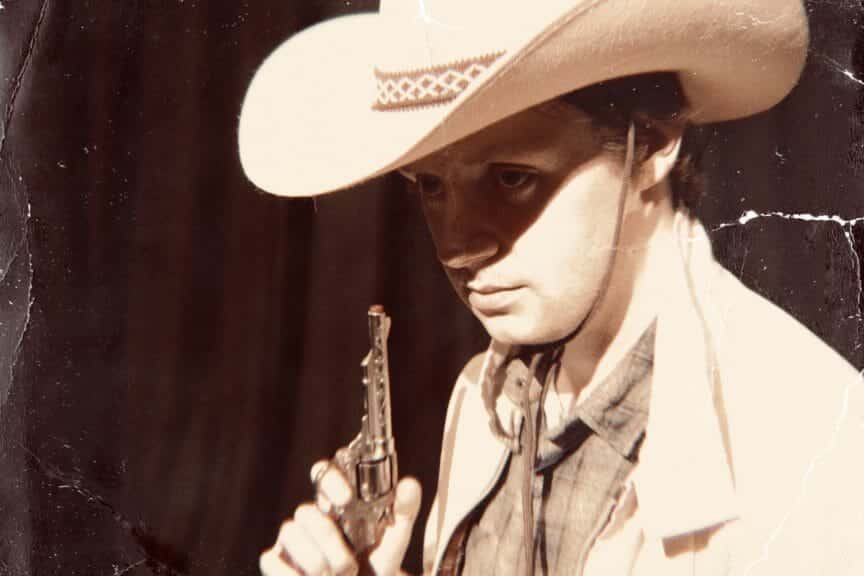
Support The Film
Find the film’s GoFundMe HERE
Find the film’s Instagram HERE


